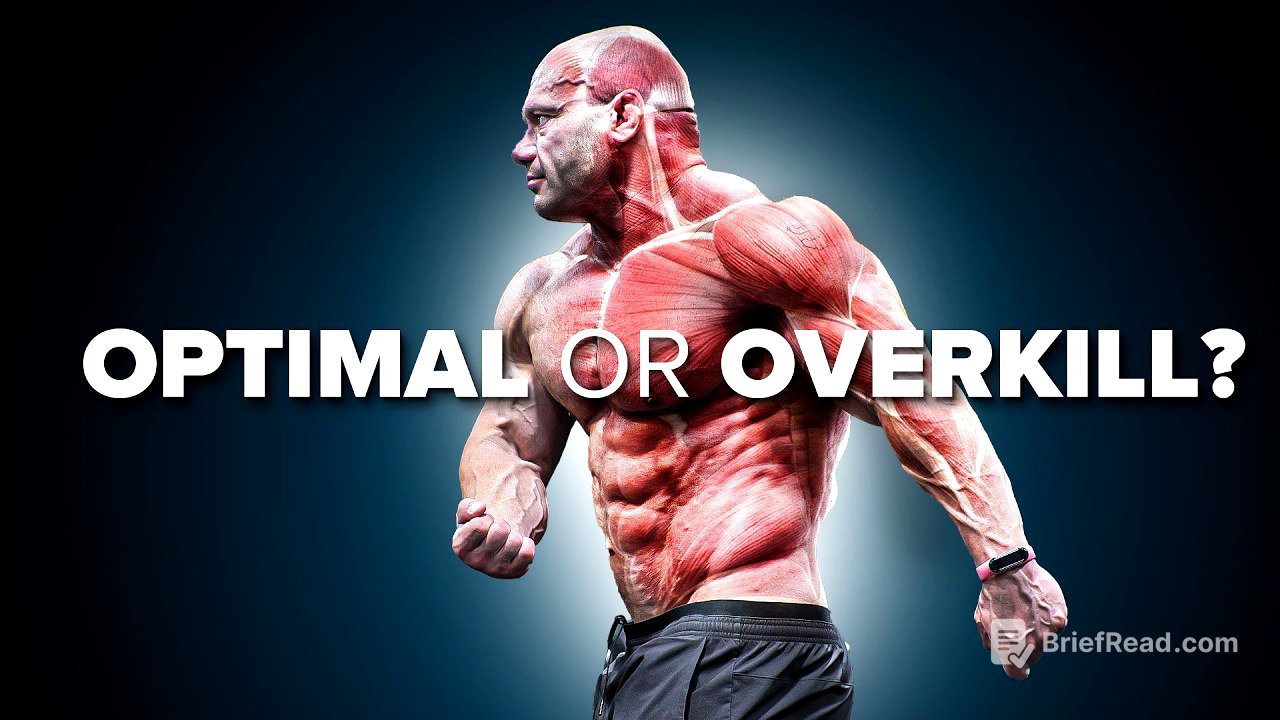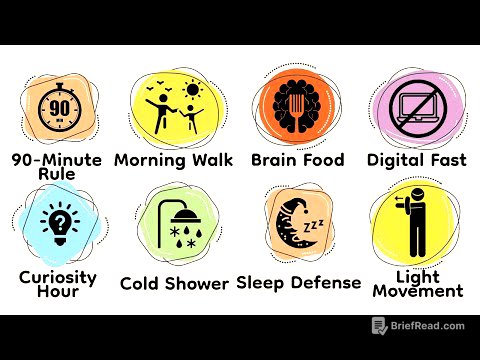TLDR;
This video explores the concept of whole body daily training, comparing it to split routines and discussing its upsides and downsides. It identifies who this training style is best suited for, who should avoid it, and how to determine if it's right for you. The video also introduces an advanced split design that combines elements of both whole body and split routines for more experienced lifters.
- Whole body daily training involves working all major muscle groups in every workout session, typically 2-6 times per week.
- It's particularly beneficial for beginners, individuals training for general fitness or other sports, and those with limited training time (2-4 sessions per week).
- Advanced lifters, those with specific physique goals, and individuals training more frequently (5-6 times per week) may find split routines more effective.
Whole Body Everyday [0:00]
The video addresses the question of whether one should train the whole body every day, acknowledging it as a recurring fitness trend with potential benefits, but not suitable for everyone. It defines whole body daily training as working all muscles in every session, contrasting it with split routines where different muscle groups are trained on different days. While "whole body" isn't technically accurate (as some smaller muscles may be neglected), the focus is on training all major muscle groups in each session, from one to six times a week, though six is not generally recommended.
Upsides [2:55]
The primary advantage of whole body daily training is its suitability for those training two to three times per week, maximizing stimulus frequency for muscle growth. Research suggests training muscles two to four times a week is more effective than once a week, even with equal volume. It also accommodates limited priority training, allowing focus on essential exercises when time is short. Additionally, it pairs well with non-overlapping superset training, enhancing cardiovascular fitness. This makes it ideal for beginners or those using hypertrophy training to supplement other sports.
Downsides [7:23]
One major drawback is the difficulty in accommodating focused whole body training. Effectively training 10-12 muscle groups with adequate volume in each session is challenging, often leading to junk volume or excessively long workouts. Reducing sets to compensate introduces issues like increased warm-up time for each muscle group and frequent exercise switching, which can be time-consuming and mentally draining. Symmetrical muscle recovery can also be difficult, as some muscle groups (like hamstrings) require more recovery time than others (like side delts), leading to inefficient training or potential overtraining. Compound lifts require significant warm-up time, making daily training less efficient.
Who is it best for? [24:35]
Whole body daily programs are most effective for beginners (those with less than a few years of lifting experience) and individuals using hypertrophy training to support other sports or lifestyles. It's also well-suited for people who train two to four days per week, especially if sessions are limited to 40 minutes to an hour. Females often benefit more from this approach due to their faster recovery rates, allowing for higher training frequency.
Who is it not for? [27:00]
Advanced lifters are generally not ideal candidates for whole body daily training, as they require more specific programming to address individual muscle imbalances and maximize growth. Those who train more than three to four times per week may also find split routines more effective due to the difficulty of cramming everything into each session. Males, who typically require more warm-up time and recover slower, may find whole body daily programs too time-consuming or unsustainable.
How can you tell? [29:00]
The easiest way to determine if whole body daily training is right for you is to try it. If you're able to fatigue all your muscles, progress in strength, and enjoy the training without excessive time commitment or systemic fatigue, it's likely a good fit. However, if you experience joint pain, struggle to fit all exercises into the session, or find it too time-consuming, it may be best to explore alternative routines.
Advanced Split Design [30:15]
The video introduces an advanced split design that combines elements of both whole body and split routines. This approach involves training muscles when they are sufficiently recovered and in positions that minimize interference with other muscle groups. It allows for varying training frequencies for different muscle groups based on their recovery rates and individual needs. For example, some muscles may be trained multiple times per week, while others are trained less frequently.
Revisiting who it is for [34:03]
In summary, beginners should try whole body training every time they go to the gym. Intermediate lifters can incorporate whole body training into some mesocycles, while advanced lifters often create custom programs tailored to their specific needs and goals. Advanced lifters can adjust training frequency based on muscle recovery rates, joint limitations, and exercise order. They can also adapt their program to fit time constraints and prioritize specific muscle groups. Ultimately, the best approach depends on individual factors and preferences.









